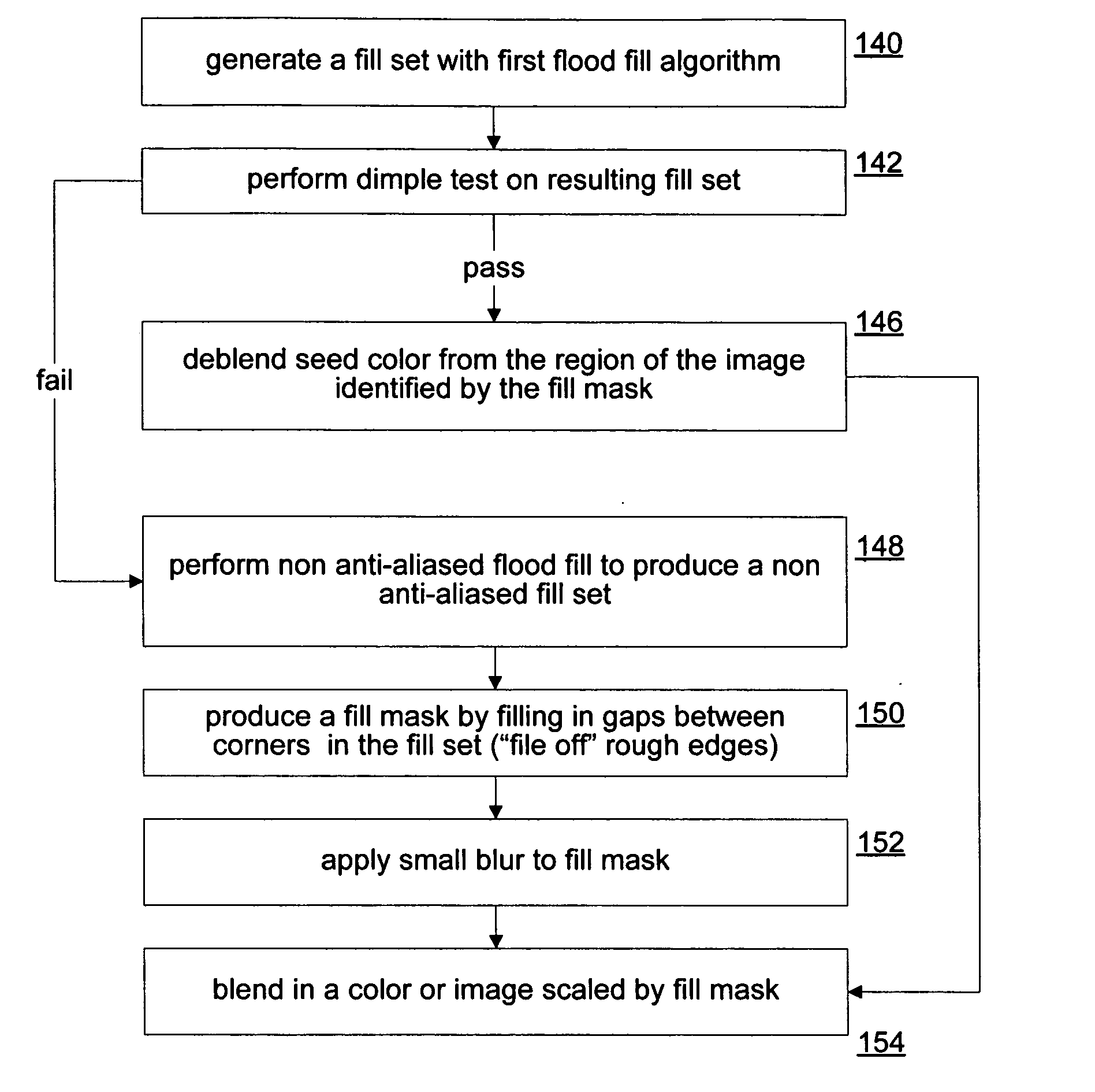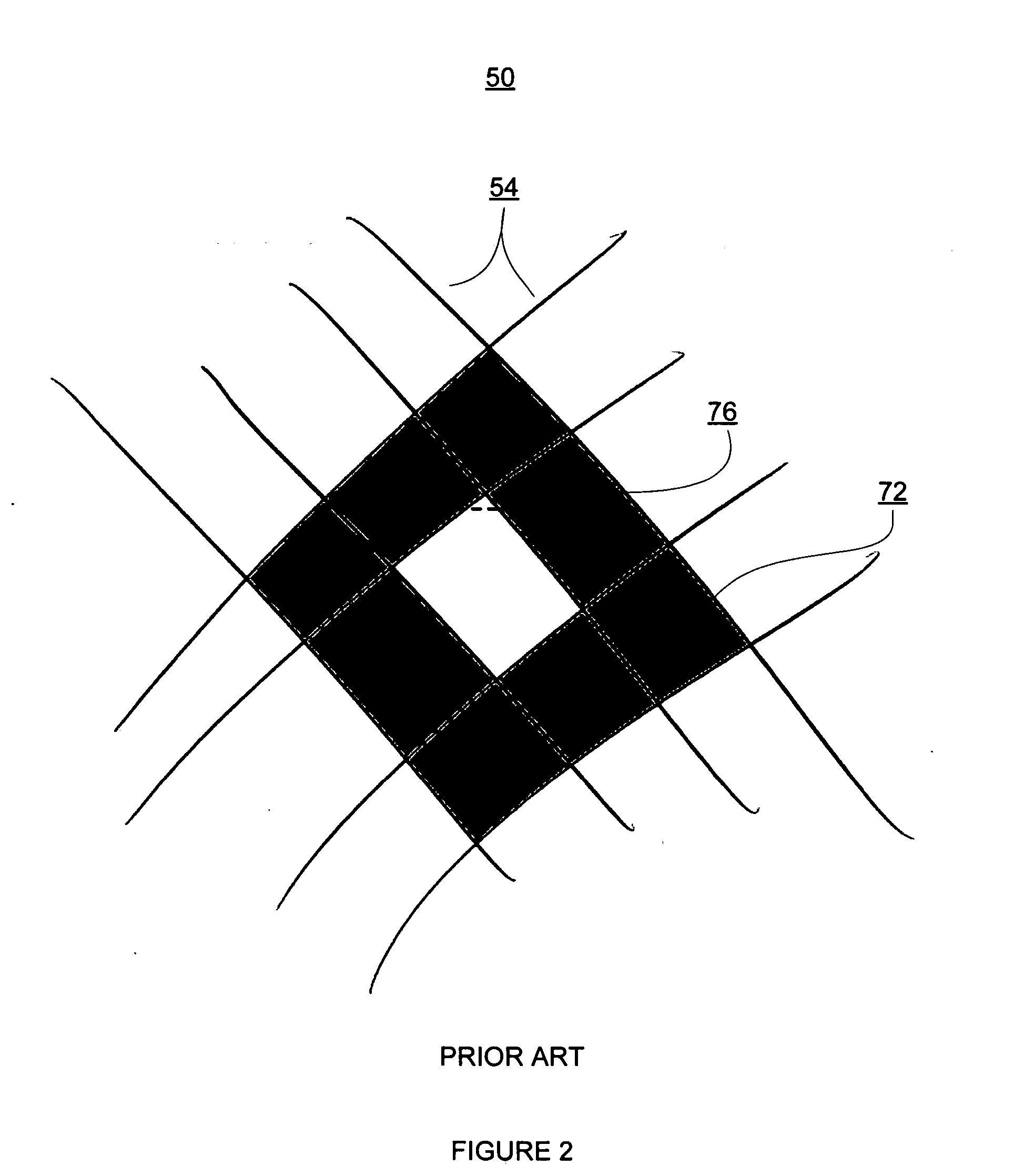Graphics processing method and system
a technology of flood filling and processing method, applied in the field of system and method for flood filling, can solve the problems of insufficient blurring, soft edges and haloes, blurring, etc., and achieve the effect of avoiding haloes and other artifacts
- Summary
- Abstract
- Description
- Claims
- Application Information
AI Technical Summary
Benefits of technology
Problems solved by technology
Method used
Image
Examples
Embodiment Construction
Overview: Hybrid Approach
[0052] As discussed above, FIGS. 2 and 3 show results from a prior art flood fill operation applied to the original image 50. In contrast, FIG. 4 shows filled regions 112 resulting from applying new flood fill techniques to the same original image 50 in FIG. 1. The filled regions 112 correspond to regions 52 and can be compared to the corresponding prior art filled regions 72 in FIGS. 2 and 3. FIG. 5 shows a blow-up of the dashed rectangular area 76 that is shown in both FIGS. 2 and 4. By comparing the blown up prior art result shown in FIG. 3 with the blown up result in FIG. 5, it can be seen that haloing and other artifacts can now be automatically avoided or eliminated.
[0053]FIG. 6 shows an overview of a combined or hybrid approach for performing a flood fill operation. Although the three features in FIG. 6 provide a combined or hybrid approach to performing a flood fill operation, each of the components are individually new and useful, as discussed be...
PUM
 Login to View More
Login to View More Abstract
Description
Claims
Application Information
 Login to View More
Login to View More - R&D
- Intellectual Property
- Life Sciences
- Materials
- Tech Scout
- Unparalleled Data Quality
- Higher Quality Content
- 60% Fewer Hallucinations
Browse by: Latest US Patents, China's latest patents, Technical Efficacy Thesaurus, Application Domain, Technology Topic, Popular Technical Reports.
© 2025 PatSnap. All rights reserved.Legal|Privacy policy|Modern Slavery Act Transparency Statement|Sitemap|About US| Contact US: help@patsnap.com



